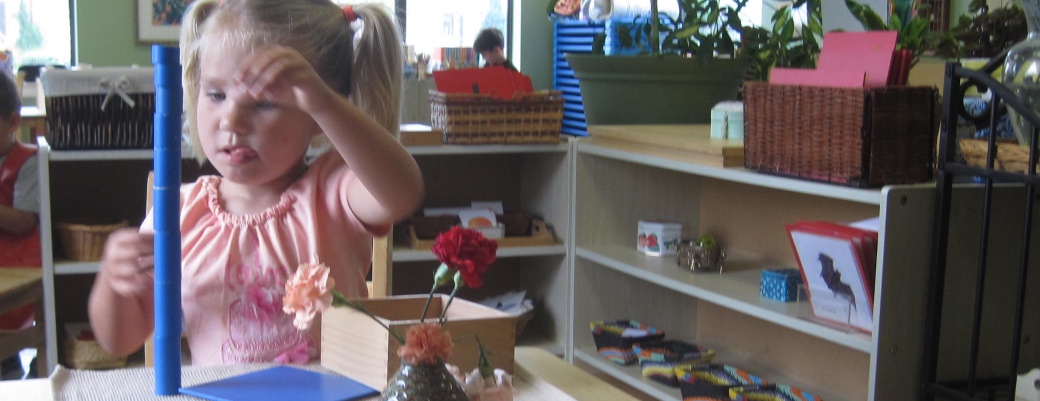
THE MONTESSORI METHOD
…………………………………………………………………………………………………………………………………………………
A Time-tested, Child-centered, Hands-on Educational Approach Based on Scientific Observations of Children
“We discovered that education is not something which the teacher does, but that it is a natural process which develops spontaneously in the human being.” – Maria Montessori
The Montessori Method
The Montessori Method of education developed by Dr. Maria Montessori, is a child-centered educational approach based on scientific observations of children from birth to adulthood. It is a philosophy that recognizes the uniqueness of each child, and respects their interests and natural growth. Dr. Montessori believed in the worthiness, value, and importance of children. Her method does not compare a child to norms or standards as in a traditional educational system, but rather understands that each child must develop at his or her own pace. Children are unique individuals who are not likely to master the exact same concepts or have the same interests at the same time.
The primary goal of Montessori is to promote the joy of learning. This joy of learning develops a well adjusted person who has a purpose and direction in his or her life. Children who experience this are happy, confident, fulfilled children. In essence, Montessori helps bring forth the gift of each child.
Also noteworthy, a Montessori education emphasizes and develops independence, self motivation, and life skills. The Montessori way helps a child to become independent by teaching him or her life skills through one area of focus known as practical life. Montessori children learn to dress themselves, help cook, put their things away and take an active part of their household, neighborhood and school. Children naturally want to learn about the world around them and want to have a role in it. Montessori supports this natural desire by providing the daily opportunities to develop those skills and be involved.
Montessori works in a methodical way. Every work in the classroom serves a purpose and teaches a skill. You will not find anything in a Montessori classroom that does not have a specific purpose or lesson. All materials are arranged from left to right, top to bottom, from concrete concepts to the abstract. This arrangement on the shelves is structured so because we read from left to right, and each lesson builds on the other. One must master the first concept to move on to the next. Dr. Maria Montessori says that a child’s play is their work, and their work is their play. When a child plays, he or she is learning concepts for abstract learning. Repetition of activities is an integral part of this learning process.
The Montessori child learns by doing. It encourages children to develop their observation skills by performing many types of activities. These activities are designed to use as many of the senses as possible, kinetic movement, spatial refinement, small and large motor skill coordination, and concrete knowledge that leads to later abstraction.
For a grade school child, Montessori encourages a child to proceed at his or her own pace onto abstract thinking, writing, reading, science, mathematics and most importantly, to absorb his or her culture and environment. Culture includes interaction with nature, art, music, societal organizations and customs.
A Montessori teacher or guide observes each child like a scientist, providing every child with an individual program for learning. Phoebe Child (Head of the Montessori Trust in London) said “we must be prepared to wait patiently like a servant, to watch carefully like a scientist, and to understand through love and wonder like a saint.”
Most of all, Dr. Montessori wanted a child’s mind to be unfettered and free to learn. It is success oriented in that almost everything is self-teaching and self-correcting. The children learn by doing, exploration of the materials, with guidance from the teacher. The environment is specifically prepared for the children to allow them to interact with it freely; everything is child-sized and safe for children to touch and use. In fact, Dr. Montessori called her center “Casa Dei Bambini,” or “The Children’s House.“
The Montessori method provides a stimulating, child oriented environment that children can explore, touch, and learn without fear. An understanding parent or teacher is a large part of this child’s world. The end result is to encourage life long learning, the joy of learning, and happiness about one’s path and purpose in life.

